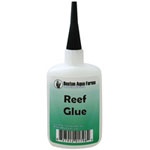 Please welcome back our “Cichlid Guy” Jose with an article on his experiences with Copadichromis species.
Please welcome back our “Cichlid Guy” Jose with an article on his experiences with Copadichromis species.
In Lake Malawi, there is a group of zooplankton feeding cichlids known to the natives as “Utaka”. They are the most important and most successful group in the lake. As where most cichlids are bottom dwellers, they have developed into an open water species. Utaka have developed several breeding techniques. Some breed in the rocky habitat and some construct sand bowers in the intermediate habitat, while others breed on the open sand. A fourth strategy is employed by Copadichromis chrysonotus. It is the only known Utaka that spawns in the open water. In the hobby, young chrysonotus have been confused with young Copadichromis azureus. I have had the pleasure of working with both species, and they are different in size, color, mouth structure and breeding behavior. While the azureus bred under a cave (where he would lure the female with figure eight motions), the chrysonotus bred six inches above the rocks. As much as I enjoyed working with this fish, I have always wanted to breed a species that utilized bowers. The species I came across is Copadichromis eucinostomus. It is found in Lake Malawi, and was previously known as Haplochromis eucinostomus and Nyassachromis eucinostomus. It is found throughout the lake where it feeds on plankton, and its habitat consists of sandy areas in shallow water where males construct “sand castle nests”.
Spawning takes place in the early morning hours. After the eggs have hatched, mouth brooding females congregate into nursery schools and release their fry simultaneously in very shallow water.
After acquiring a wild pair from work, I put them into one of my 75 gallon aquariums. The tank was decorated with caves and a fine Aragamax sand substrate. The water conditions were as follows: Ph 8.8, a hardness of 200 ppm, and a temperature of 82 degrees. Their diet consisted of different flake foods supplemented by occasional feedings of frozen brine and mysis shrimp.
After about one month, the male started piling sand into a mound in a corner of the tank. His color then began to intensify. He went from silver with a light blue face to a light blue with yellow dorsal and caudal fins. From the lower jaw to the anal fin he was black. He then started courting the female to his nest, where she deposited at least two dozen eggs in the normal mouth brooder fashion. At about 27 days I noticed some fry hiding in the rocks. I then removed the rocks in order to catch the fry. I captured 17 fry less than 1/4” in length. The fry then went into a breeder net that was hung in the same tank. They were fed crushed flake and baby brine soaked in Selcon. They ate very well and never turned down food. After three weeks, I transferred them into a 10 gallon tank for growth. This species is generally peaceful at 4.5”. Their max length is 6”, although in the aquarium they can probably get larger. It is definitely worth keeping along with Aulonocara and certain Malawi haps. They are not common along the East coast, but you might be able to find them through forums or specialized clubs dealing with cichlids if we are not able to get them for you. Copadichromis are great looking fish with interesting breeding behaviors. I would recommend if you keep African cichlids to give this family a try, you won’t regret it.
Thanks Jose, as always we look forward to future tales of your experiences.
 That Fish Blog – Aquarium Advice and Information
That Fish Blog – Aquarium Advice and Information


